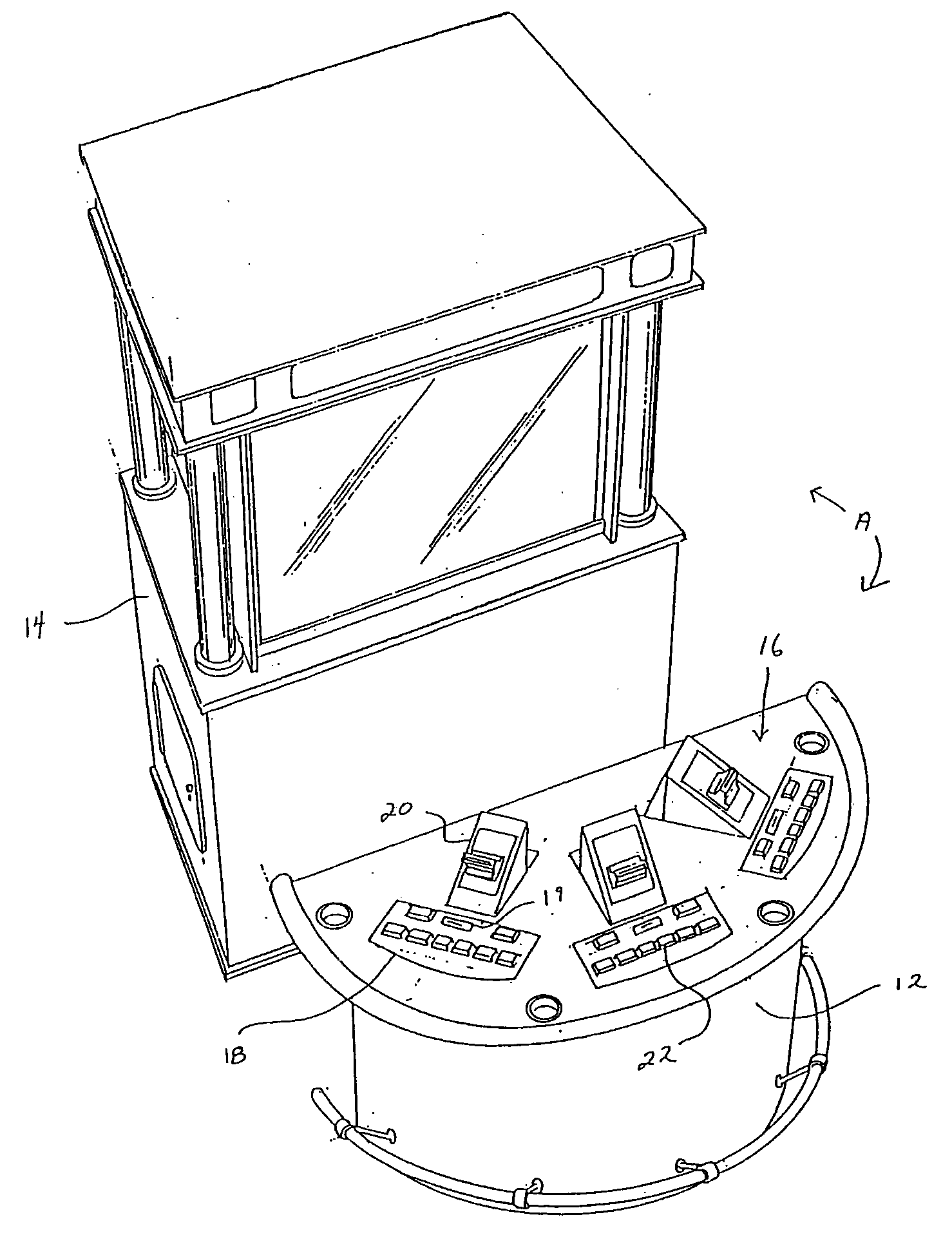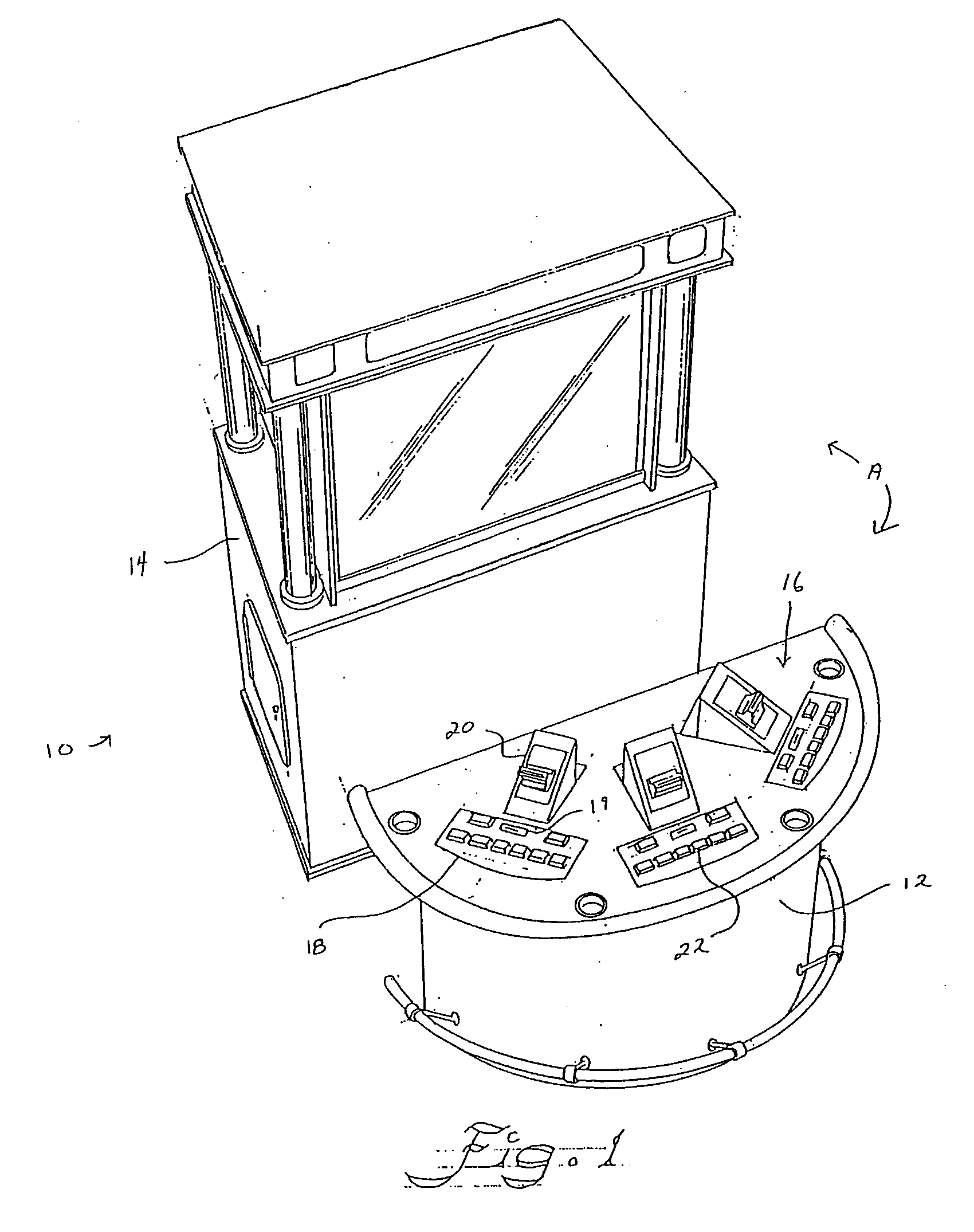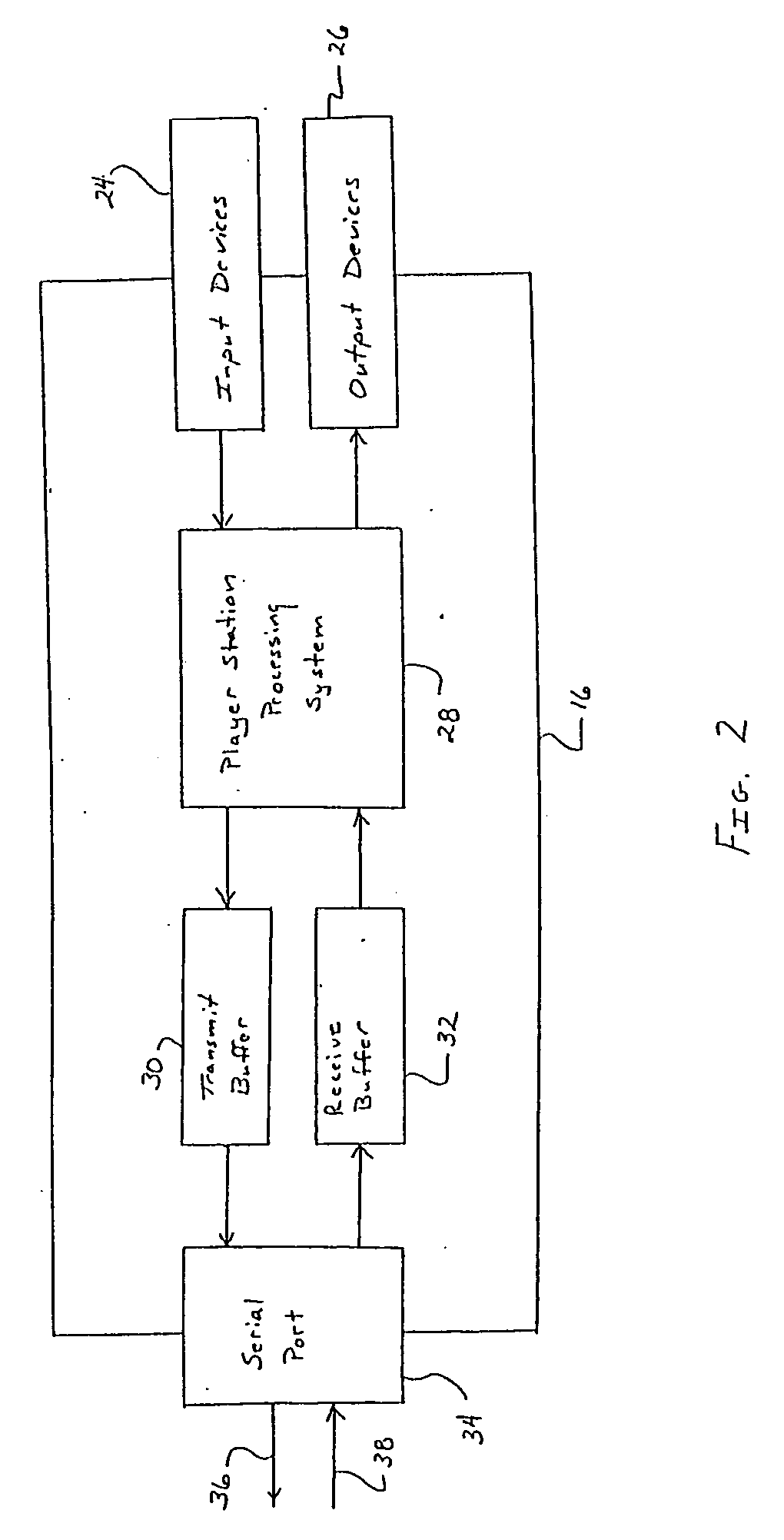[0014] It is also an object of the present invention to provide an improved interface assembly capable of simultaneously
processing multiplayer input messages.
[0015] Some of these objects are achieved by a multiplayer
interactive video gaming device comprising a computer workstation assembly including an input / output
system and at least one
data port, the workstation assembly including a game processor device configured to receive input signals by the input / output
system from one or more of the at least one data ports and to execute a video gaming program responsively to the input signals. The device includes at least one player station including at least one
data input device and configured to output player input messages in response to activation of the the at least one
data input device. The device includes an interface assembly in operative communication with the one or more at least one data port and configured to receive the player input messages from a plurality of the player stations and to output the player input messages to the computer workstation assembly by the one or more at least one data port. The interface assemby and the at least one player station are operably associated with each other to
route the player input messages from the at least one player station to the computer workstation assembly according to a predetermined protocol so that player input messages generated from simultaneous activation of a plurality of input devices are output to the computer workstation assembly without
information loss.
[0017] Preferably, a specialized
input device processor is used that services each player station. A variety of input devices, for example joysticks, keypads, buttons, currency acceptors,
coin / token acceptors, etc. may be attached. Each player station processor is designed to accept inputs, formulate messages regarding each input, and transmit those messages to a message
concentrator. The player stations may communicate with the message
concentrator directly, for example in a "star" arrangement, indirectly, for example in a "daisy-chain" configuration, or through a mixture of the two. The message
concentrator acts as a buffer for incoming messages from a plurality of player stations which may be locally or remotely connected. The concentrator prioritizes the passing of messages to a workstation using a suitable
algorithm, for example round robin, first-in first-out, rotating priority, random priority, etc. The queues on the message concentrator buffer all incoming messages and prevent the loss of input data in situations where multiple messages arrive simultaneously. The speed of message transfer allows the message concentrator processor to support multiple simultaneous input messages. Because most or all input messages may be directed to the workstation through a single input port, the concentrator queues input messages, in some prioritized fashion, into an output
queue connected to this port. Thus, no messages are lost, and the workstation receives most or all messages through a single input port, providing increased security and
testability.
[0019] The interface assembly is operably associated with the player stations to
route the player input messages to the game computer. In the star arrangement of an exemplary video blackjack game, for example, the player stations output the input messages directly to a concentrator. Each player station generates and outputs player input messages according to a predetermined protocol so that input messages resulting from simultaneous button activations at that player station are routed to the concentrator without
information loss. The concentrator, in turn, receives the player input messages from a plurality of player stations and routes these messages to the game computer according to its protocol so that player input messages simultaneously received from a plurality of player stations are routed to the game computer without information loss. Thus, the concentrator and the player stations are operably associated with each other to route the input messages to the game computer so that player input messages generated from simultaneous activation of a plurality of buttons are output to the game computer without information loss.
[0020] In an exemplary daisy-chain arrangement of the same game, only one player station communicates directly with the concentrator. The remaining player stations are linked downstream from the concentrator in tandem from the first player station. As in the star arrangement, each player station generates and outputs player input messages according its protocol so that input messages resulting from simultaneous button activations at that player station are output from the player station without information loss. The player stations in this arrangement, however, include an additional
serial port to receive player input messages from downstream player stations. These downstream player input messages are received by a player station and passed on to the next upstream player station or, if the player station is the first in line, the concentrator without interfering with the
processing and routing of its own input messages. Thus, the concentrator and the player stations are operably associated with each other to route the input messages to the game computer so that player input messages generated from simultaneous activation of a plurality of buttons are output to the game computer without information loss.
 Login to View More
Login to View More  Login to View More
Login to View More 


